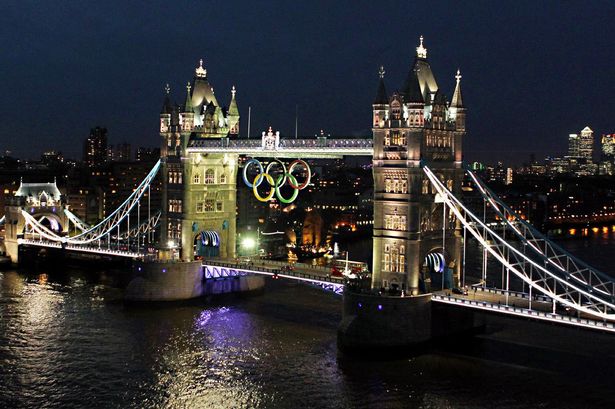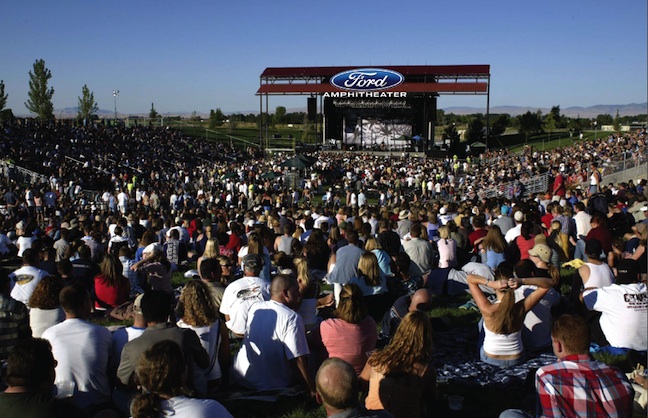By Paul Bryant Birdwell - paul@roaringforkagency.com - 415 730 - 4854
If there is one thing we here at the Roaring Fork Agency as representatives of properties in search of sponsorship could do it would be to get better insight into what marketing/advertising decision-makers at companies are thinking when they are considering a sponsorship investment and IEG has delivered a nice gift to us and our clients during this holiday season with the following look at just what companies are looking for when spending sponsorship dollars:
What do sponsors want to find under the tree for the 2014 holiday season? What would they like to see properties do better?
IEG SR poised those questions to marketing execs at six of the industry’s biggest sponsors: Bank of America, PepsiCo, Nationwide Insurance, SAP, UPS and Volkswagen. Below are edited excerpts from their responses.
Charles Greenstein, sponsorship marketing executive, Bank of America
Wish list: Added value in the form of content with digital and social distribution, coupled with a better understanding of what drives our business and marketing goals and objectives.
What properties need to do better: Identify areas of improvement or best-in-class activations where we could either benefit directly or leverage to drive greater value, as well as business integration with other property partners where there is product and/or brand synergy.
Rich Foster, vice president of enterprise brand marketing, Nationwide Insurance
What properties need to do better: At Nationwide, we believe sports marketing / sponsorships need to move the needle just like any other part of the marketing mix.
However, measurement needs in this space require a tremendous amount of work and attribution to specific performance metrics is very difficult. Like most sponsors, finding the secret sauce or "Christmas present" that delivers full attribution of investment and focus against KPIs would be ideal.
Nationwide's sports marketing objectives are focused on brand building, fan/client engagement and philanthropic support. It's through that lens that we are able to align specific KPIs for all properties at an enterprise level to ensure sports marketing efforts are driving value.
Jennifer Storms, senior vice president, global sports marketing, PepsiCo
What properties need to do better: More willingness to co-create value – Properties and brands have greater opportunities to work together to find mutually beneficial solutions, including customizable sponsorship packages tailored to brands and their specific needs.
Better access to fan analytics – Properties know their fan bases best. Providing sponsors with access to those insights and analytics unlocks a wide range of innovative consumer engagement opportunities that enhance the fan experience and help sponsors plan, execute and measure sponsorship activation. For example, insight on a fan’s in-venue location and team preference can allow PepsiCo to create unique consumer touch points, such as mobile offers at concessions (e.g. a coupon for a Pepsi and pizza promotion).
Chris Burton, group vice president, SAP global sponsorships
What properties need to do better:....”
There is just some great insight in the above IEG article on what decision-makers at companies that are making Billions of Dollars worth of sponsorship investments each year are thinking and these are the kinds of things we talk to our clients about all the time in an effort to build an event and sponsorship program that can drive real value for the sponsoring company which is often committing large amounts of resources to their sponsorship investments and thus want a strong return on their significant sponsorship commitments.
One of the most important things an event and/or their sponsorship sales agency can do when considering what companies to pitch sponsorship opportunities to is to align as best as possible…
The Event with the Sponsoring Company’s Product and/or Services
….and there is no better example of that than the deal that Stryker recently put-together with the PGA Tour which Jason Belzer of GAME Inc. wrote about at Forbes.com:
PGA Tour's Partnership With Stryker A Case Study In Sports Sponsorship, Jason Belzer, Forbes.com
“For non-traditional brands seeking to create awareness among consumers, the usage of sports sponsorship is often the most proficient vehicle in accomplishing just that. There is no better example of this than that which is provided by Stryker Corporation’s recent announcement that it was becoming the “Official Joint Replacement Product of the PGA TOUR”. While the words joint replacement and professional golf aren’t exactly synonymous, from a marketing perspective there is actually a great deal of synergy between the two.
Much like other medical device and pharmaceutical companies, Stryker Corporation, was faced with a perplexing marketing question – How do they bring awareness of their company and its products to the general public while still adhering to the traditional ethics of the medical industry? After all, it should not be the patient that recommends to the doctor what type of treatment they should be receiving.
Stryker started by looking at the simple fact that both hip and knee replacements have nearly doubled in the United States over the last decade. While such operations often bring relief to patients who have suffered from joint paint and increase basic levels of mobility, they also often severely curtail those individuals capacity to participate in sports that put a great deal of pressure on one’s joints. That being said, recent advances in orthopedic technology by Stryker have greatly reduced such post-surgery constraints, allowing those individuals who are equipped with their products to participate in the activities and sports they love.”
It doesn’t take a rocket-scientist to see the strong connection between active golfers and the potential for marketing Stryker’s hip-replacement products to people that play the game of golf, but it does take the marketing people at Stryker along with the PGA Tour to put together a strong sponsorship partnership program that makes sense for both sides and as Jason Belzer details in his column this is exactly the kind of WIN-WIN sponsorship agreements that need to be put together more often that will drive more customers and thus revenue & profits to the sponsoring company which after all is the only reason why a company should be committing sponsorship dollars in the marketplace.
IEG – www.sponsorship.com
Stryker – www.stryker.com
PGA Tour – www.pgatour.com
GAME Inc. - www.gameinconline.com
If you have any questions about event sponsorship or venue naming rights contact the Roaring Fork Agency at:
paul@roaringforkagency.com
415 730 - 4854
Aspen, Colorado
Tiburon, California
Incline Village, Nevada
Santa Monica, California
Newport Beach, California
Twitter - @RoaringForkAgcy









































